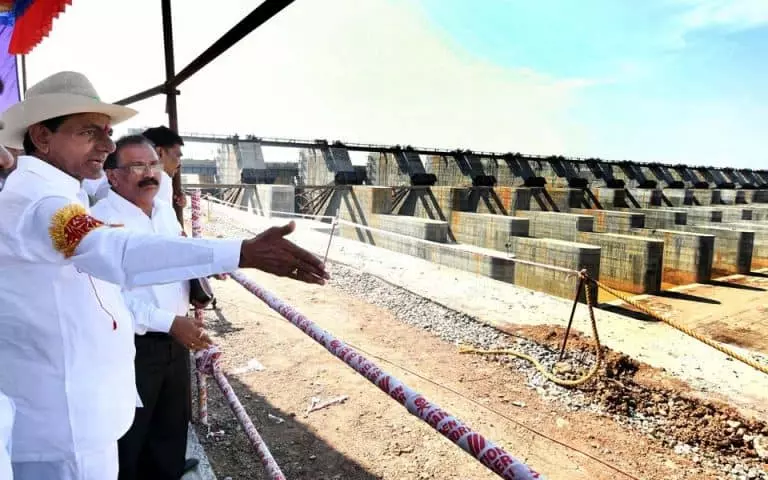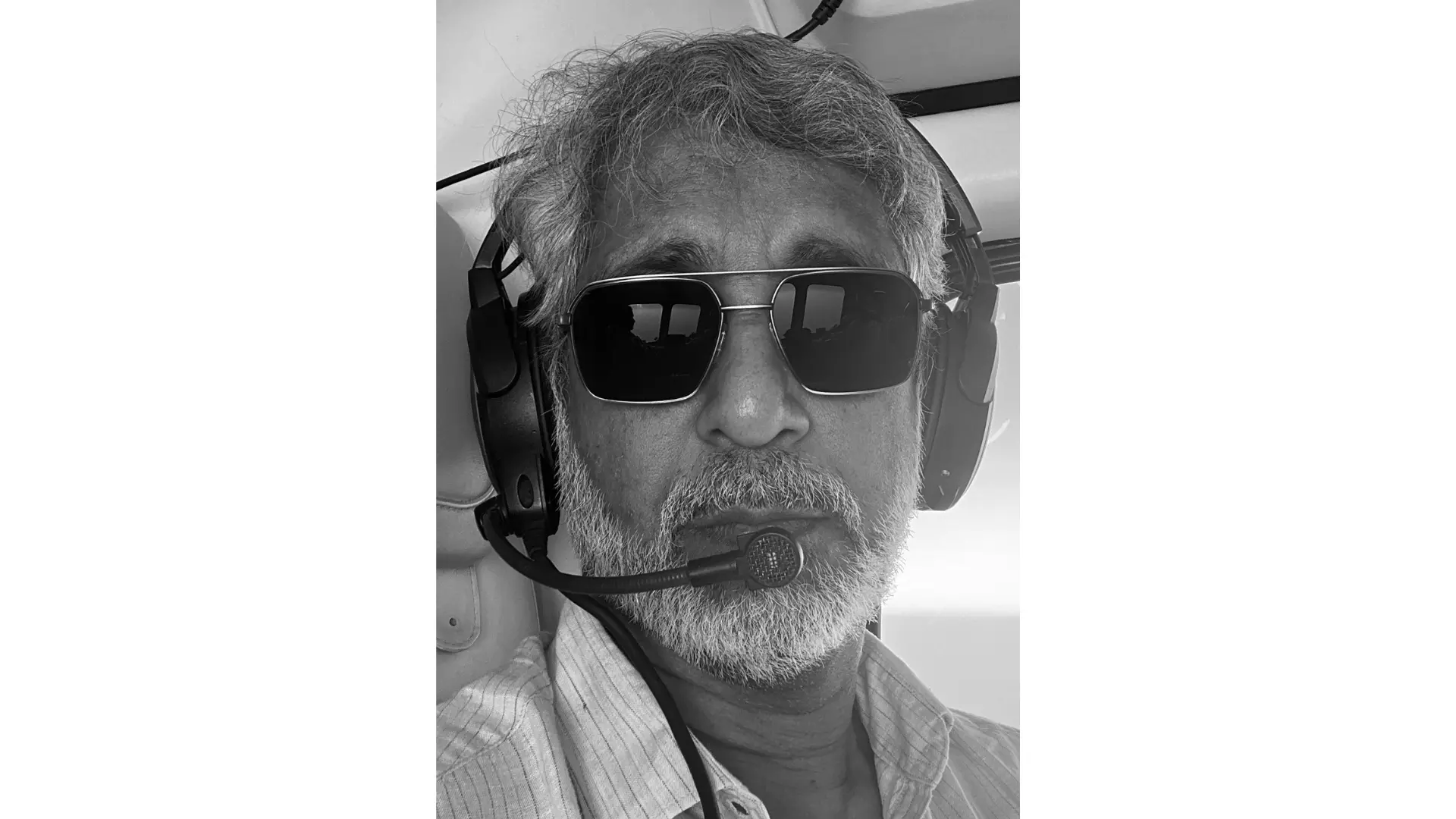Medigadda Collapse: KCR's Hands-On Decisions Likely Cause
Documented evidence reveals that a decision to accelerate construction of the Kaleshwaram project, including the use of oversized concrete blocks, may have contributed to the sinking of the Medigadda barrage

Hyderabad: Part of the answer to the question as to why the Medigadda barrage of the Kaleshwaram project began sinking probably had its roots in a decision taken by the then Chief Minister and irrigation minister K. Chandrashekar Rao in 2019. This decision of his could also hold the key to the reason for the rush to complete the project, which may have eventually contributed to the Medigadda disaster.
Rao, who had on multiple occasions claimed that he designed the Kaleshwaram project, was probably not making up this claim, as indicated by documentary evidence on inspection notes of his visit to Kaleshwaram project works on January 1 and 2, 2019.
The document – Lr. No. CMO/Irr/KP/01/2019 dated 01.01.2019 - says “during the inspection and reviews, the following instructions were given by the Hon’ble Chief Minister.”
Among these ‘instructions’ is this one:
2.4 In order to increase the pace, working agency (L&T) requested to permit to put 10 x 10 (feet) concrete blocks downstream of barrage (Medigadda) for energy dissipation instead of 1.5 x 1.5 (feet) blocks for early completion of barrage works. Working agency has informed that these kind of bigger concrete blocks are being used in Polavaram project in AP State. Engineer-in-Chief (irrigation) is instructed to examine the request of the Working Agency, and take a decision as per technical and operational feasibility.
What happened next:
The ‘working agency’, L&T Construction in this case, used 10X10 feet blocks with a surface area of 100 sq. ft as flood dissipation blocks on the downstream side of the Medigadda barrage, against the originally designed 1.5 x 1.5 feet blocks with a surface area of 2.25 sq.ft. When floods came to the Godavari river on which the barrage was built in 2019, not many months after Medigadda was inaugurated by Chandrashekar Rao in June 2019, and then a much greater flood in 2002, the larger than originally designed for concrete blocks were dislodged and carried away by the flood water.
“The thing is the large surface area of the 10 x 10 blocks meant that they acted like sails and the water just picked them up and carried them away downstream. Had the blocks been of the originally planned size, instead of being carried away, would have interlocked and stayed put, or in a worst-case scenario as happened at Annaram, gotten dislodged,” sources well-versed with such technicalities told Deccan Chronicle.
The Consequence:
With the washing away of these oversized flood ‘dissipation’ blocks, the pressure of water stored at Medigadda resulted in formation of pipes under the foundations washing away the sand bed on which the foundations stood, eventually leading to collapse three piers of Block 7 of the barrage, and also put a question mark over the safety of the rest of the barrage structure.
Why L&T needed to finish work quickly (from the same document):
2.1 The Chairman of L&T assured that Medigadda Barrage works including bridge over barrage, approaches on both sides of bridge, excavation of diversion channel simultaneously in all respects shall be completed latest by 15 of April, 2019. The Agency will take necessary steps to augment men and machinery.
2.2 Working agency is instructed to increase concrete form works, boom placers to pour 10,000 cubic metres per day at Medigadda barrage to complete barrage works within the target date of completion
Why construction was asked to be speeded up:
Apparent plans to inaugurate the barrage in June by Chandrashekar Rao. It was inaugurated on June 21, 2019 by the then Chief Minister who also held the irrigation portfolio in his second term in office.
